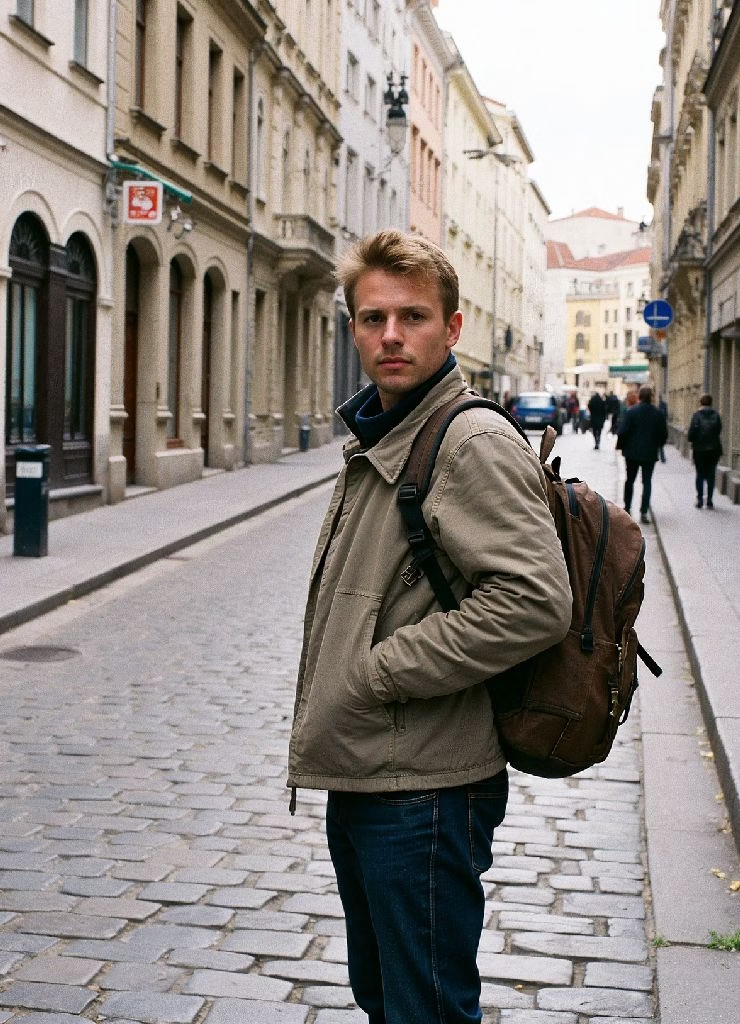Last Updated on
Vienna, Austria’s capital, is known for its rich history, stunning architecture, and vibrant cultural scene. While the city’s excellent public transportation system makes it easy to get around without a car, some visitors and residents prefer the flexibility and convenience of driving.
Whether you’re planning to rent a car for a day or you’re a resident considering driving in Vienna regularly, it’s essential to understand the rules, advantages, and challenges associated with driving in this bustling European metropolis.
This comprehensive guide covers everything you need to know about driving in Vienna, including the benefits and drawbacks, rental and insurance information, parking fees and regulations, and a list of major parking facilities.
1. Introduction to Driving in Vienna
Vienna, one of Europe’s cultural capitals, is famous for its imperial palaces, museums, historic landmarks, and a well-preserved old town. While the city boasts an efficient public transportation system—including trams, buses, and a metro network—some visitors and residents may find driving a car offers greater convenience and flexibility. However, driving in Vienna comes with its own set of rules, advantages, and challenges that are important to understand before getting behind the wheel.
2. Advantages of Driving in Vienna
Flexibility and Convenience
One of the main advantages of driving in Vienna is the flexibility it provides. With a car, you can create your own schedule, avoid waiting for public transport, and travel directly to your destination. This is especially useful for tourists who want to explore beyond the central city area or for business travelers needing to move quickly between meetings.
Access to Outlying Areas
Driving in Vienna allows easy access to the surrounding regions, such as the beautiful Vienna Woods (Wienerwald), the picturesque Wachau Valley, or the historic towns like Salzburg and Graz. A car gives you the freedom to explore these areas at your own pace, making day trips or weekend getaways much more feasible.
Comfort and Privacy
For those who prefer privacy or are traveling with a group or family, driving can offer a more comfortable experience. It provides a personal space, which is especially beneficial during longer trips. Additionally, having a car allows you to carry luggage, shopping bags, or sports equipment without the inconvenience of public transport.
3. Disadvantages of Driving in Vienna
Traffic Congestion
Like many major cities, Vienna experiences traffic congestion, especially during peak hours (typically between 7:00-9:00 AM and 4:00-6:00 PM). Navigating through busy streets can be time-consuming and stressful, particularly in the city center and along major routes leading into and out of Vienna.
Parking Challenges
Finding parking in Vienna can be a daunting task. The city has strict parking regulations, and available parking spaces can be scarce, especially in popular areas like the Innere Stadt (the historic first district). Understanding parking zones, fees, and regulations is crucial to avoid fines and towing.
Environmental Concerns and Regulations
Vienna is committed to reducing its environmental impact, and this includes implementing regulations to limit vehicle emissions. The city has introduced low-emission zones, and certain areas may have restrictions for older or more polluting vehicles. Drivers should be aware of these regulations and ensure their vehicle meets the required standards.
4. Car Rental and Insurance Details
Car Rental Requirements
Renting a car in Vienna is relatively straightforward, but there are specific requirements you need to meet:
- Minimum Age: Most car rental companies require drivers to be at least 21 years old. Some companies may charge an additional fee for drivers under 25.
- Driving License: You must have a valid driving license. If your license is not in English or German, it’s recommended to carry an International Driving Permit (IDP) along with your national license.
- Credit Card: A valid credit card in the driver’s name is typically required for the security deposit and rental payment.
Major Car Rental Companies
Several major car rental companies operate in Vienna, offering a wide range of vehicles to suit different needs and budgets:
- Europcar
- Sixt
- Avis
- Hertz
- Budget
- Enterprise
These companies have rental offices at Vienna International Airport and various locations throughout the city. It’s advisable to book your car in advance, especially during peak tourist seasons.
Insurance Options and Requirements
When renting a car in Vienna, it’s essential to understand the insurance options available:
- Third-Party Liability Insurance: This is mandatory in Austria and covers damages to other vehicles and property.
- Collision Damage Waiver (CDW): This reduces your financial liability in case of damage to the rental car. It often comes with a deductible.
- Theft Protection: Covers the cost if the rental car is stolen.
- Personal Accident Insurance: Provides coverage for medical expenses and personal injuries in the event of an accident.
Most rental companies include basic insurance in their rates, but it’s worth considering additional coverage for peace of mind. Check the terms and conditions carefully and clarify any questions with the rental agency.
5. Parking in Vienna
Overview of Parking Rules and Zones
Vienna has a comprehensive parking management system with different zones to regulate parking:
- Short-Term Parking Zones (Kurzparkzone): These are designated areas where parking is limited to a maximum of 2 hours. These zones are usually marked with blue lines. A parking ticket (Parkschein) must be displayed, which can be purchased from ticket machines, tobacconists, or via a mobile app.
- Resident Parking Zones: Certain areas are reserved for residents with parking permits. Non-residents can only park here with a valid parking permit, which is generally difficult to obtain for short-term visitors.
- Loading Zones: Marked by yellow lines, these areas are reserved for delivery vehicles and short-term loading/unloading.
- Handicapped Parking: Designated spots are reserved for vehicles displaying a valid handicap parking permit.
Parking Fees and Payment Methods
Parking fees vary depending on the location and time of day:
- Inner Districts (1-9): Short-term parking fees typically range from €1 to €2 per hour. Payment can be made using parking ticket machines, which accept coins, credit cards, or through mobile parking apps such as “Handy Parken.”
- Outer Districts (10-23): Parking fees are generally lower or may not be applicable in some residential areas. However, check local signs for specific regulations.
Parking Violations and Penalties
Violating parking rules can result in fines or your vehicle being towed. Fines for parking violations typically range from €20 to €70. In severe cases or repeated offenses, your vehicle may be immobilized with a wheel clamp or towed away. Always pay attention to parking signs and regulations to avoid penalties.
6. Main Parking Facilities in Vienna
Vienna offers various parking facilities, including public garages and park-and-ride options:
Public Garages and Park-and-Ride Facilities
- Parkhaus City (Garage City)
- Location: Freyung 4, 1010 Vienna (Inner City)
- Description: Centrally located, providing easy access to Vienna’s main attractions, including St. Stephen’s Cathedral and the Hofburg Palace.
- Garage Am Hof
- Location: Am Hof 4, 1010 Vienna (Inner City)
- Description: Offers parking close to major shopping streets and historical sites.
- MuseumsQuartier Garage
- Location: Museumsplatz 1, 1070 Vienna (Near Mariahilfer Straße)
- Description: Ideal for those visiting the MuseumsQuartier, Maria-Theresien-Platz, and nearby cultural attractions.
- Garage Kärtnerstraße
- Location: Mahlerstraße 8, 1010 Vienna (Near Opera House)
- Description: Convenient for those attending performances at the Vienna State Opera or visiting the Albertina Museum.
- Park-and-Ride Erdberg
- Location: Franzosengraben 2, 1030 Vienna
- Description: A budget-friendly option for long-term parking. Located near a metro station, providing easy access to the city center.
- Park-and-Ride Spittelau
- Location: Spittelauer Lände 12, 1090 Vienna
- Description: Located next to a major transport hub, allowing quick metro access to various city districts.
- Park-and-Ride Ottakring
- Location: Hütteldorfer Str. 130, 1140 Vienna
- Description: Convenient for those entering Vienna from the west. Located near a metro station for easy commuting.
Popular Parking Locations
- Stephansplatz: Located in the heart of Vienna, offering easy access to St. Stephen’s Cathedral and surrounding shopping and dining areas.
- Schwedenplatz: A key area near the Danube Canal, providing parking for those exploring the historic city center or taking river cruises.
- Schottenring: Offers parking options near the Ringstrasse, providing easy access to the city’s iconic boulevard and attractions like the Vienna University and the Burgtheater.
7. Driving Tips and Recommendations
Navigating Vienna’s Road Network
- Ringstrasse: This circular road around the old city center is a crucial route for navigating Vienna. It connects many of the city’s major attractions and is often used by trams and buses.
- Autobahn (Highway) Access: Vienna is well-connected to Austria’s highway network, making it easy to travel to other cities and regions. Note that highways require a vignette (toll sticker), which can be purchased at gas stations and border crossings.
- Avoid Driving in Pedestrian Zones: Certain areas in the city center are pedestrian-only zones. These are clearly marked with signs. Be mindful of these areas to avoid fines.
Understanding Traffic Signs and Signals
- Speed Limits: The general speed limit in Vienna is 50 km/h (31 mph) within the city and 30 km/h (19 mph) in residential areas. Highways typically have a speed limit of 130 km/h (81 mph).
- Traffic Lights: Vienna’s traffic light system follows the standard European system. Note that turning right at a red light is not allowed unless indicated by a sign.
Emergency Contacts and Road Assistance
- Emergency Numbers: For emergencies, dial 112 for general emergency services, 122 for fire, 133 for police, and 144 for medical assistance.
- Roadside Assistance: Austria’s automobile clubs, such as ÖAMTC (Austrian Automobile, Motorcycle, and Touring Club), offer roadside assistance. You can contact them at 120 for immediate help.
8. Conclusion
Driving in Vienna, Austria, can be a rewarding experience, offering flexibility, convenience, and the ability to explore beyond the city center. While there are challenges such as traffic congestion, parking difficulties, and strict regulations, being well-prepared and informed can help you navigate these effectively. Whether you’re visiting Vienna for a few days or planning to stay longer, understanding the city’s driving, parking, and insurance regulations will enhance your experience and help you make the most of your time in this beautiful European capital.
By adhering to local driving laws, respecting parking regulations, and taking advantage of the city’s well-maintained parking facilities, you can enjoy a seamless and enjoyable driving experience in Vienna. From exploring historic sites and cultural landmarks to venturing out to Austria’s stunning countryside, having a car can add a unique and memorable dimension to your Viennese adventure.

Hello, I am Jan, a travel writer based in the Czech Republic. I specialize in discovering and writing about my homeland—medieval towns, mountain hikes, the local pub scene, and off-the-tourist-radar destinations.
I also write about life as an expat in Czechia—just what it is like to live here, and not just visit. That means the little victories, the cultural surprises, and the daily realities of establishing life in this side of the world. I have also spent some time in Vienna (Austria), and I wrote several useful articles for expats there.


